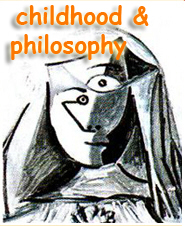the elephant in the room: picturebooks, philosophy for children and racism
Keywords:
Community of Enquiry, Community of Inquiry, Race, Racism, Whiteness, Multiculturalism, Diversity, PicturebooksAbstract
Whilst continuing racism is often invoked as evidence of the urgent need for Philosophy forChildren, there is little in the current literature that addresses the topic. Drawing on CriticalRace Theory (CRT) and the related field of Critical Whiteness Studies (CWS), I argue thatracism is deeply ingrained culturally in society, and best understood in the context of‘Whiteness’. Following a CRT-informed analysis of two picturebooks that have beenrecommended as starting points for philosophical enquiry into multiculturalism, racism anddiversity – Elmer and Tusk Tusk by David McKee, I argue that whilst the use of stories withanimals is commonly regarded as offering children the comfort of distance from emotionallychallenging topics, this has the effect of separating racism from its temporal and spatialrealities, which limits rather than enhances opportunities for engaging philosophically withit. I argue in favour of the practice of ‘reading against the text’ and consider theepistemological and practical obstacles to this practice drawing on my own experiencesdiscussing race with P4C practitioners in the UK. I attempt to illustrate how the selection ofrecommended materials, combined with commonly held principles of P4C, make for aclimate where a philosophical engagement with race and racism that considers the discourseof ‘Whiteness’ is highly unlikely to occur. This leads me to posit the idea of The GatedCommunity of Enquiry.Downloads
Download data is not yet available.
Downloads
Published
2014-07-29
How to Cite
CHETTY, Darren. the elephant in the room: picturebooks, philosophy for children and racism. childhood & philosophy, Rio de Janeiro, v. 10, n. 19, p. 11–31, 2014. Disponível em: https://www.e-publicacoes.uerj.br/childhood/article/view/20689. Acesso em: 11 may. 2025.
Issue
Section
articles




